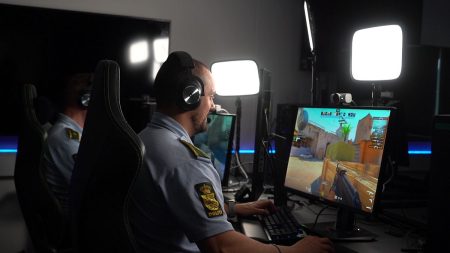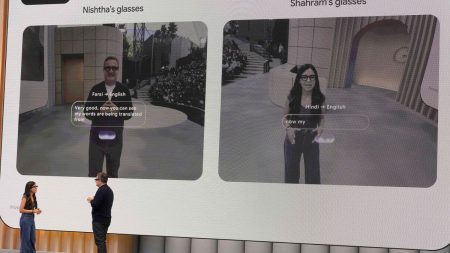The Emergence of AI-Powered Smart Glasses and Wearables at CES 2025
The Consumer Electronics Show (CES) 2025 witnessed a surge in smart glasses and AI-powered wearables, posing a significant challenge to established players like Meta’s Ray-Ban smart glasses. Several innovative companies showcased their cutting-edge technology, demonstrating the growing potential of AI integration in wearable devices. These advancements promise to revolutionize how we interact with information and our surroundings, blurring the lines between the digital and physical worlds.
One of the most notable unveilings was the Halliday Glasses, the first AI glasses to incorporate both an AI agent and a "DigiWindow." This unique display system projects information directly into the user’s field of vision without obstructing the lens itself, offering a seamless augmented reality experience. Unlike traditional heads-up displays, the DigiWindow remains visible even in bright sunlight, making it practical for outdoor use. Moreover, the AI agent can answer complex questions, summarize discussions, and generate meeting notes, boosting productivity and efficiency. Priced between $399 and $499, Halliday Glasses target a premium market, offering advanced features beyond those found in Meta’s display-free Ray-Bans.
Privacy concerns surrounding smart glasses have also been addressed. India’s Mustard Glasses prioritize user data protection by implementing enhanced security measures within their operating system. Unlike some competitors, Mustard Glasses aim to restrict data access in private settings, ensuring greater control over sensitive information. The company is also developing a hidden camera design to further enhance privacy and maintain a discreet appearance. This approach addresses growing anxieties about data collection and surveillance in an increasingly connected world.
Israeli company Lumus showcased a prototype boasting impressive specifications. The glasses feature a 16-megapixel camera, significantly surpassing Meta’s 12-megapixel offering, and a claimed battery life of 40 hours, threefold that of Meta’s Ray-Bans. This focus on extended battery life addresses a key limitation of current smart glasses, making them more practical for daily use. With a planned Kickstarter launch and a retail price point of around $200, Lumus aims to offer competitive features at a more accessible price.
The integration of AI extends beyond smart glasses, with the emergence of AI-powered watches for children. Pinwheel presented a kid-friendly smartwatch featuring PinwheelGPT, an age-appropriate chatbot. The chatbot incorporates safeguards to prevent inappropriate responses, redirecting children to seek guidance from adults when necessary. Parental controls allow remote monitoring of messages, calls, and contact lists, providing a layer of safety and supervision. Additionally, the watch includes GPS tracking for location monitoring. This blend of educational and safety features caters to the needs of both parents and children.
Another AI watch for children was showcased by Watch Out Wearables. This brightly colored watch aims to engage children aged 6-13 with an interactive chatbot capable of providing information on various topics. Simply by pointing the watch at an object, like an insect, children can learn more about it. The company emphasizes the watch’s safety and ethical design, ensuring age-appropriate content and avoiding potentially harmful information. These AI watches demonstrate the potential of wearable technology to educate and engage children in a safe and interactive manner.
The advancements showcased at CES 2025 underscore the rapid evolution of smart glasses and AI wearables. From enhanced privacy features to improved camera capabilities and extended battery life, these devices are becoming increasingly sophisticated and user-friendly. The integration of AI agents and interactive chatbots further expands their functionality, transforming them into powerful tools for productivity, learning, and communication. As the market for smart glasses and wearables continues to grow, competition and innovation will likely drive further advancements, leading to even more seamless and integrated experiences.














